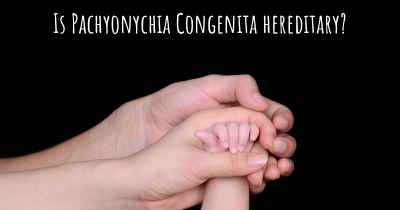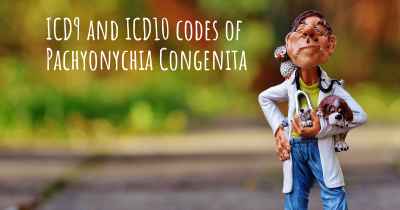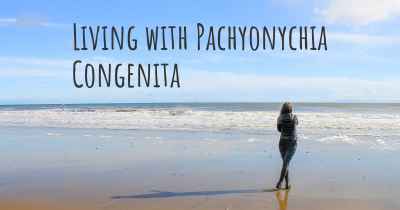What is the history of Pachyonychia Congenita?
When was Pachyonychia Congenita discovered? What is the story of this discovery? Was it coincidence or not?

Pachyonychia Congenita (PC) is a rare genetic disorder that affects the development of nails and skin. It was first described in medical literature in the early 20th century, but its history can be traced back even further.
Early Observations:
The earliest known case of PC dates back to the late 19th century when a German physician named Heinrich Quincke reported a patient with abnormally thickened nails. However, it wasn't until 1904 that the condition was officially recognized and named by two British dermatologists, Sir Archibald Garrod and Sir James Collier.
Discovery and Classification:
Garrod and Collier identified PC as a distinct disorder characterized by thickened nails (pachyonychia) and other associated symptoms. They classified PC into two types based on the pattern of inheritance: PC type 1 (PC-1) and PC type 2 (PC-2).
PC Type 1:
PC-1, also known as Jadassohn-Lewandowsky syndrome, was named after the German dermatologists who extensively studied the condition. They described PC-1 as a rare autosomal dominant disorder, meaning it can be inherited from one affected parent. PC-1 is characterized by thickened nails, painful calluses on the soles of the feet (plantar keratoderma), and other skin abnormalities.
PC Type 2:
PC-2, also known as Jackson-Lawler syndrome, was named after the American dermatologists who further investigated the disorder. PC-2 is also an autosomal dominant disorder but has a different set of symptoms compared to PC-1. It is characterized by thickened nails, cysts on the jaw (mandibular cysts), and other dental abnormalities.
Advancements in Understanding:
Over the years, advancements in genetic research have deepened our understanding of PC. In the late 1990s, scientists discovered that PC-1 is caused by mutations in the KRT6A and KRT16 genes, which provide instructions for making proteins called keratins. These keratins are essential for the structural integrity of nails, skin, and other epithelial tissues.
Similarly, in the early 2000s, researchers identified that PC-2 is caused by mutations in the KRT17 gene, another keratin gene. These discoveries provided crucial insights into the molecular mechanisms underlying PC and paved the way for further research.
Current Research and Treatment:
Today, ongoing research aims to uncover additional genes and mutations associated with PC, as well as to develop targeted therapies. The identification of specific genetic mutations has enabled genetic testing, allowing for accurate diagnosis and genetic counseling for affected individuals and their families.
While there is currently no cure for PC, various treatment options are available to manage the symptoms. These include regular podiatric care to address nail and foot problems, pain management strategies, and the use of specialized orthotic devices to alleviate discomfort.
Conclusion:
Pachyonychia Congenita has a rich history that spans over a century. From its initial recognition as a distinct disorder to the recent advancements in genetic research, our understanding of PC has significantly evolved. Ongoing research continues to shed light on the underlying causes and potential treatment options, offering hope for improved quality of life for individuals living with this rare genetic condition.








